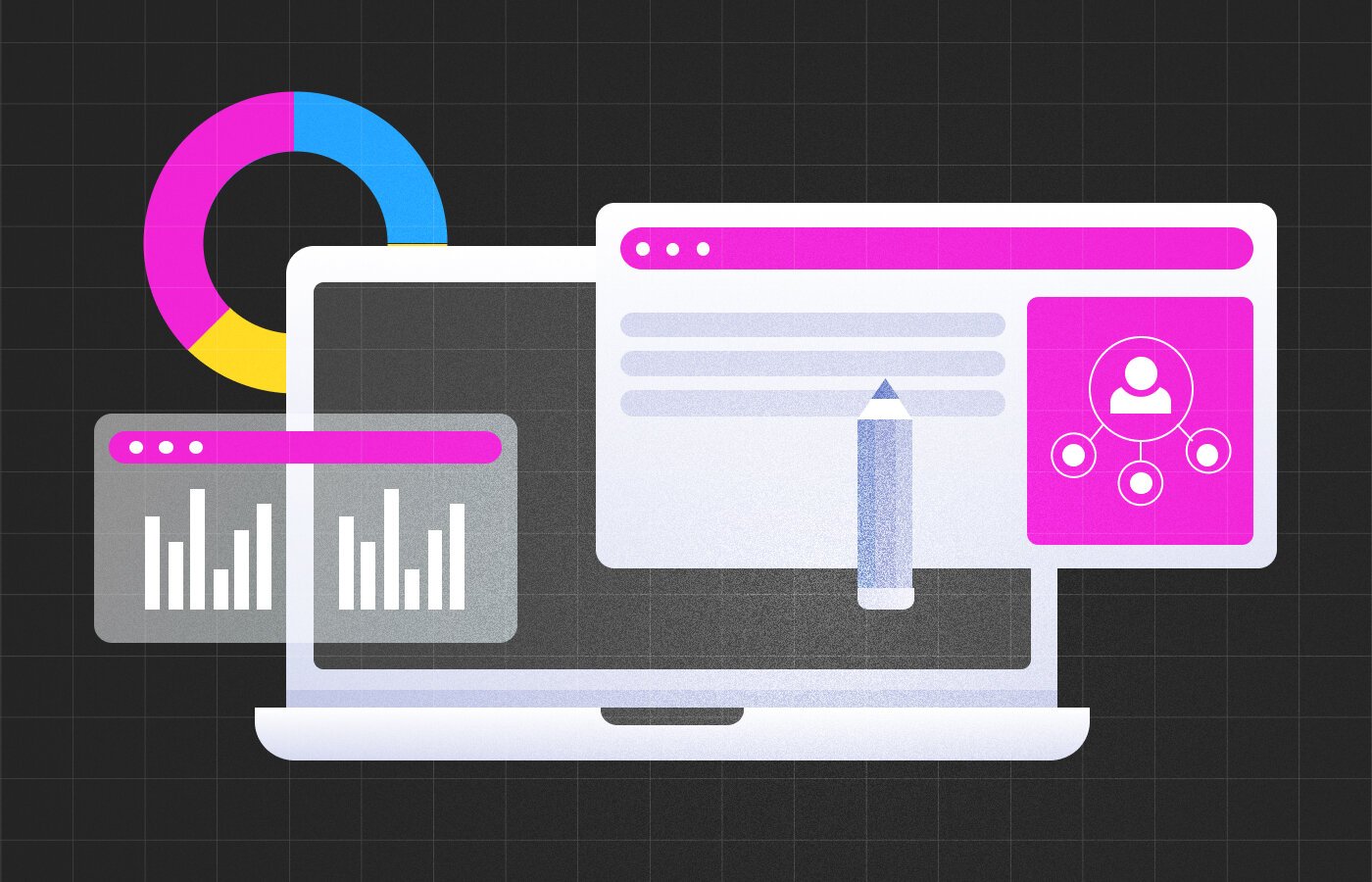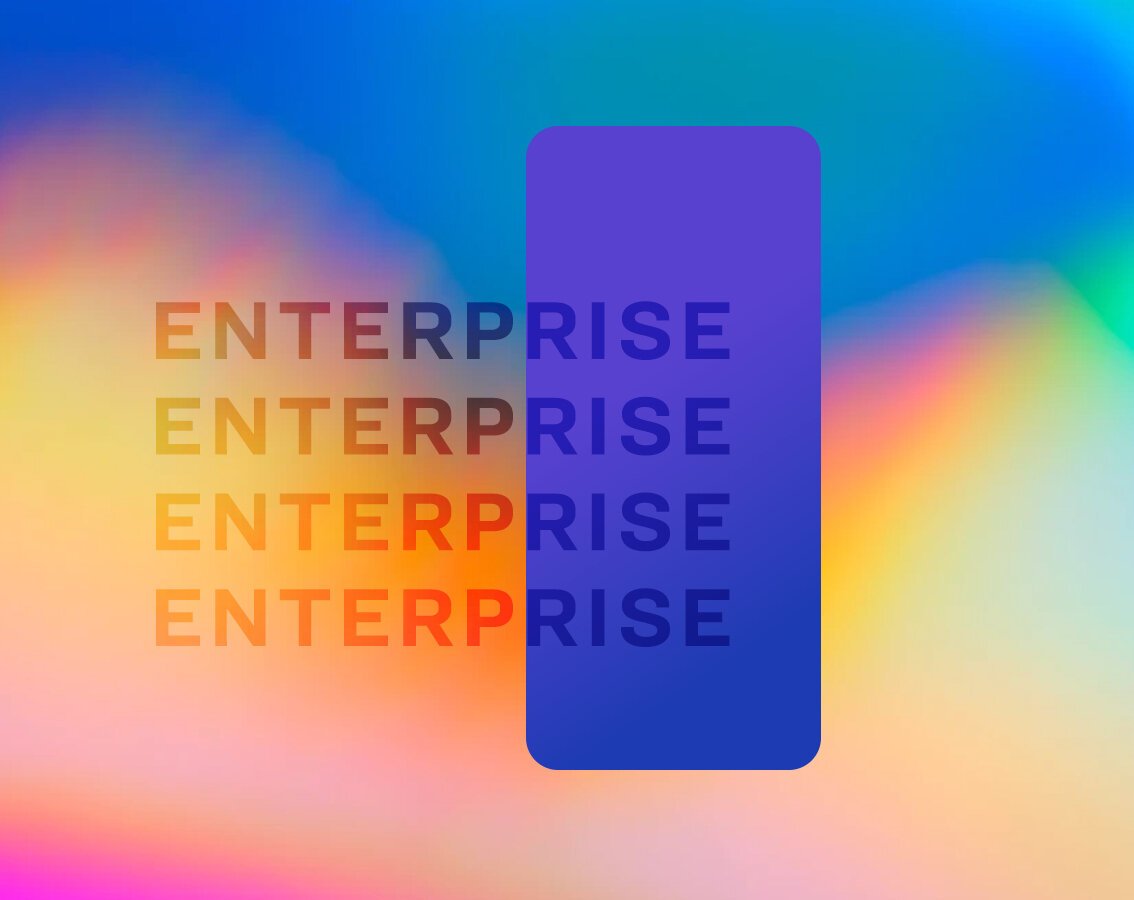blog
Unlocking Better UX in Enterprise Application Development
By Mohan S Software development App development Enterprise Mobility September 10, 2023

Enterprise applications play a crucial role in facilitating critical processes and enabling seamless collaboration among employees. Functionality and performance is often prioritized over UX. However, the importance of superior UX in enterprise apps is becoming increasingly evident.
A user-centric approach requires attention to user needs, preferences, and pain points. Gathering feedback from end-users and involving them in the design process can yield valuable insights and contribute to a more intuitive application. Conducting usability tests and iterative design cycles can refine the UX further.
Additionally, the UX design process should consider the diverse user base, as they may vary in technological proficiency, roles, and responsibilities. Personalization and customization options within the app can enhance the overall experience for each individual user.
Enterprise UX vs. Consumer UX
Enterprise and consumer UX are distinct domains of user experience design, catering to different audiences and goals, requiring understanding for efficient application creation.
Enterprise UX and consumer UX differ due to their distinct audiences and goals. Enterprise apps face complexity, requiring customization and efficiency. Balancing efficiency and learnability is crucial for empowering users and optimizing employee productivity. UX designers can create effective applications that cater to these unique demands.
1. Complexity of Enterprise UX:
Enterprise applications handle complex workflows and data-driven processes, requiring intricate user interfaces. Consumer apps focus on simplicity and ease of use, catering to a broader audience with varying technical expertise.
2. Need for Customization in Enterprise UX:
Enterprise apps require high levels of customization to meet unique workflows and business requirements. Customization allows users to tailor the application to their roles and preferences, enhancing productivity and user satisfaction.
3. Importance of Efficiency in Enterprise Apps:
Enterprise applications must optimize efficiency to ensure employees perform critical tasks efficiently. A well-designed UX prioritizes streamlined processes, quick access to information, and minimal clicks for essential tasks, preventing productivity bottlenecks.
4. Shift in Type of User:
Consumer apps cater to diverse users, while enterprise apps target employees and professionals within an organization, offering personalized experiences tailored to the workforce's needs and goals.
5. Balance between Efficiency and Learnability:
Enterprise apps must strike a balance between efficiency and learnability to adapt quickly to new users. A well-crafted onboarding process, clear guidance, and intuitive interfaces help new users master the app without compromising productivity.
Importance of Enterprise UX
Enterprise UX is crucial for business outcomes, as it increases productivity, streamlines workflows, reduces complexity, and empowers employees to make informed decisions. A user-centric design improves internal interactions, fosters collaboration, and gathers feedback for continuous optimization. By investing in a superior UX, organizations can enhance operational efficiency, increase employee satisfaction, and gain a competitive advantage in the marketplace.
1. Increased Productivity:
Enterprise UX streamlines workflows, reduces time, and minimizes cognitive load, boosting productivity and resulting in time and cost savings for businesses.
2. Easier Understanding:
A well-crafted UX design simplifies enterprise processes, enabling employees to navigate effectively and make informed decisions. Clarity in design ensures users find information, comprehend data-driven insights, and make informed decisions.
3. Improved Internal Interactions:
Enterprise applications require collaboration among teams and departments, requiring a user-centric UX for seamless internal interactions, enhancing communication, and promoting efficient work environments.
4. Optimizing for Future Improvements:
Enterprise UX designers can improve applications by understanding end-user behavior, pain points, and preferences. User feedback and analytics inform iterative design updates, making the application more usable and relevant. Regular optimization aligns with evolving business requirements.
Workflow for Enterprise Software Design
Enterprise software design requires a comprehensive understanding of industry, users, and legal considerations. Collaboration among stakeholders promotes a holistic approach, while advanced interaction design and data-driven decisions optimize the user experience. Designing for different personas and maintaining thorough documentation enhances application efficacy and success. Defining comprehensive stages for app development ensures enterprise UX aligns with business goals, meets user needs, and drives positive outcomes.
1. Understanding the New Industry and Subject Matter:
Gaining a comprehensive understanding of the enterprise application's industry is crucial for designing a relevant, tailored UX that aligns with industry-specific standards and practices. This knowledge helps designers tackle unique challenges, requirements, and user expectations, ultimately enhancing the overall user experience.
2. Collaboration Workflow:
Enterprise software design involves multiple stakeholders, requiring a collaborative workflow. Regular meetings, workshops, and feedback sessions foster a shared understanding of project goals and user needs, enhancing cross-functional problem-solving and resulting in comprehensive solutions.
3. Understanding Users:
Understanding end-users is crucial for enterprise application design. User research, interviews, and surveys help identify preferences, pain points, and goals, enabling designers to create personas and user journeys accurately. A user-centric approach enhances the overall user experience.
4. Integrating Rules and Laws:
Enterprise applications must adhere to legal and regulatory frameworks, such as data privacy regulations, to ensure compliance and avoid potential issues. Designers should consider legal constraints to create a UX that meets business goals and industry standards.
5. Advanced Interaction Design:
Enterprise apps require advanced interaction design for complex navigation, a clear information architecture, and well-designed user flows. This simplifies intricate workflows, minimizes cognitive load, and enhances user understanding and engagement through thoughtful micro-interactions and responsive feedback.
6. Letting Data into Your Heart:
Data-driven design is crucial in enterprise UX, as it helps analyze user behavior, track interactions, and gather usage metrics. This informs design decisions, validates hypotheses, identifies pain points, and optimizes UX based on real user feedback, ensuring evidence-based decisions.
7. Designing for Different Personas:
Enterprise applications cater to diverse user profiles, requiring tailored UX and personalization to enhance user satisfaction and adoption. This involves considering user profiles and roles to ensure a relevant and efficient experience.
8. Thorough and Reliable Documentation:
Thorough design documentation is essential for communication, collaboration, and future reference. It includes user research findings, design rationale, interaction specifications, and guidelines, ensuring accurate conveying of design intent to developers and stakeholders.
Enterprise UX Trends
The future will see a surge in enterprise UX trends, utilizing advanced technologies for enhanced user experiences. AR and VR integration provide immersive training and collaboration; AI-driven features optimize workflows, animated illustrations and 3D graphics enhance comprehension; passwordless logins improve security, and accessibility and inclusivity ensure diverse user bases accessibility.
By staying updated, businesses can develop innovative, user-centric apps that drive productivity, efficiency, and satisfaction.
1. Integration of AR and VR:
The integration of AR and VR technologies in enterprise applications is gaining momentum, offering immersive experiences for training, visualization, and remote collaboration. AR overlays digital information onto the physical environment, while VR simulates realistic training scenarios in safe virtual environments.
2. Utilization of Artificial Intelligence:
AI is gaining popularity in enterprise UX, optimizing workflows, automating repetitive tasks, and providing personalized experiences. Natural language processing and chatbots enhance communication and support, while AI-driven data analytics and insights enable data-driven decision-making.
3. Animated Illustrations and 3D Graphics:
Animated illustrations and 3D graphics enhance enterprise apps' storytelling, making them intuitive and enjoyable. These elements convey complex concepts in a simple, understandable manner, reducing user learning curves.
4. Move Towards Passwordless Logins:
Passwordless logins are becoming more secure and user-friendly, with biometric and multi-factor authentication becoming standard in enterprise apps. These methods improve security and eliminate the hassle of remembering and managing passwords, resulting in a smoother user experience.
5. Focus on Accessibility and Inclusivity:
Enterprise applications prioritize accessibility and inclusivity in design, incorporating features like screen readers, voice commands, and adaptable user interfaces for all users. This inclusive approach ensures equal access to critical functionalities and intuitive interfaces that cater to diverse needs.
Conclusion
Enterprise User Experience (UX) is crucial for businesses' success and efficiency. A well-crafted UX leads to increased productivity, streamlined workflows, and improved internal interactions. By understanding industry challenges, collaborating with stakeholders, and prioritizing user needs, enterprise applications can deliver exceptional experiences.
As digital transformation continues to shape industries, investing in UX becomes a strategic imperative. By acknowledging user-centered design and staying updated with trends, businesses can create applications that empower their workforce, drive operational excellence, and propel the organization towards continued growth and success.




